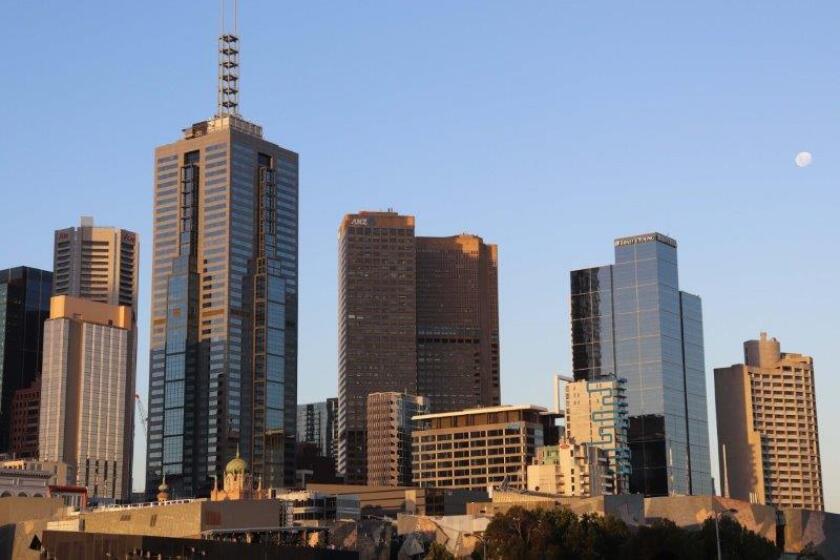Regulations and the underlying principles of 5G infrastructure are leading MNOs to increase network capacity in urban areas. Data consumption is on the rise due to large percentages of populations working and learning from home across Asia. To keep pace with these evolutions, towercos are required to innovate and evolve alongside their tenants.
Densification will require the establishment of more unique sites that fit into urban environment and will require new technologies and revenue models. In the lead up to Meetup Asia, TowerXchange received a number of questions from participants across the infrastructure landscape, looking to better understand how these projects would take shape. With the help of Damien Kelly, Head of Engineering and Innovation at Delmec; Suresh Sidhu, CEO, EdgePoint Infrastructure and Devid Gubiani, CEO, Global Network Inc we answered all of them on a dedicated keynote panel. Here's what we learnt:
How has Covid-19 impacted network demands?
During the conversation, the participants explored how towercos are embracing street furniture as a smaller and nimbler site design, the factors that will impact urban network rollouts, and what the future holds for solutions across the Asian market.
“Street furniture is typically a structure that is deployed in an urban setting and are usually hidden in plain sight”. Kelly explains.
Alongside 5G rollouts, the effects of the Covid-19 pandemic has been a key driver of a renewed focus on urban densification. Remote working and learning have brought around a shift in data consumption from urban commercial districts towards more residential areas, which has meant that network hotspots have become less concentrated and spread further afield.
As the Covid-19 recovery period begins with learning and working patterns shifting back to pre-pandemic norms, this strain on mobile networks persists. It is likely that elements of this shift in where people consume data will be permanent, and the quantity of data consumed will continue to grow. If this is indeed the case, radio planners will need to change the way that mobile networks are designed, what they are used for, and bring forward plans for capacity increases.
Waiting for the new normal
But this is easier said than done. The ebb and flow of case numbers and the restrictions on movement and daily life that come in their wake has prevented a status quo from emerging. While the initial drops in speed witnessed at the dawn of the pandemic has now been addressed by operators, long term network optimisation has been impossible.
Even after a prolonged return to normalcy, consumption patterns are unlikely to revert as the demand for entertainment streaming services and cloud solution-supported home offices will persist, and could even grow.
To combat these challenges, operators need to rethink the design of their networks, with macro sites able to offer a base level of coverage, street furniture offering increased capacity and infill and rooftops acting as a hybrid of both.
"Our aim with Streetworks is to bring coverage close to the consumer on a smaller footprint with lower visual impact. The designs consist of a pole type structure installed typically in an urban, or suburban location.” Kelly says.
From his experience: “Street furniture can be used for both macro and micro solutions. Typically, a micro solution would be deployed as a “infill” solution using a small structure [normally less than 10m] and low watt antennas. They’ll often be deployed in densely populated location with the sole purpose of filling in blackspots in the network coverage.”
“They can also be macro solutions which cover a larger area and typically feature a higher power antenna, larger structure and host multiple technologies. Macro solutions can be either large towers, rooftops or slim poles which are usually seen in the urban and suburban setting.”
Considering how long it will take for 5G networks to established and for enough consumers to acquire handsets capable of using the technology, the same principle can be applied to generational technology as well. In urban areas it is expected that 4G will serve as a base layer with 5G sitting on top to boost performance for consumers of large amounts of data.
Towercos role in enabling urban connectivity
Street furniture offers a solution for addressing capacity challenges, but tower companies have their own challenges when it comes to monetising and managing these assets.
Maintaining a high tenancy ratio is fundamental to a traditional tower portfolio’s value and profitability and is therefore a key metric. Unfortunately, the lack of available space and height on most street furniture makes it unviable to add a second tenant in the majority of cases.
This simple structural limitation sparks into effect a chain reaction. As towercos are receiving less revenue from MNOs, they can in turn afford to pay less rent to the municipality where they will be hosting a site. This has led towercos to consider alternative revenue models, and municipalities to look for added value beyond improving local coverage - including digital advertising space and air temperature and quality sensors to public wifi and electric vehicle charging stations.
Towercos are also interested in offering more services to operators to increase the profitability of these sites – although take up is slow. Antenna-as-a-service and site-as-a-service have benefits beyond making co-location easier, and are starting to be considered mor seriously.
But what exactly does site-as-a-service mean? According to Kelly: “In simple terms, instead of a towerco only providing the structure for operators to locate on, they will provide a more complete package. The towerco can provide the structure, the BTS unit, power and antennas. The operator will only need to plug into the site and they’re on air.”
This is relatively unchartered territory for many towercos, and relying on specialists and advisors to provide this service. Delmec are currently providing support on the structure side, and one of their key goals for 2022 is to expand their offering to match the new ambitions of their clients.
Shared antennas make fiber installation easier and cheaper, reduces the power a site needs to operate effectively, and improves urban aesthetics – an increasingly prevalent consideration among city planners and permitters.
Restrictions placed on the height of street furniture (and therefore their profitability due to the fact that radio planners still consider height a major factor in getting value from their tenancy) are in part driven by these same urban aesthetic considerations.
This is a challenge not restricted to Asia. Kelly has experience working with clients to avoid challenging deployments in Ireland: “The majority of challenges we face revolve our visual impact, space restrictions, planning restrictions and local resident not wanting the structure ‘in their back yard’” he explains.
The Site-as-a-Solution concept offers its own unique advantages to both the tower and operator industry. Fundamentally, when everything is bundled, the specifics of the deployment don’t matter to the towerco or the operator so long as coverage KPIs and uptime SLAs are being met.
This gives more flexibility to reduce parallel infrastructure and provides efficiencies in network and maintenance operations. With the time pressure being placed on increasing capacity in certain urban locations, these benefits are becoming undeniable for operators.
For towercos, this means diversifying their expertise into untraditional avenues. The last five years have seen many towercos diversify into fibre, but those who are yet to do so will struggle offering a Site-as-a-Service solution due to their lack of experience managing connectivity.
This doesn’t mean towercos need to become fully fledged fibrecos, and avoiding the fibre to the home retail element can prevent towercos being seen as competitors with their tenants.
Even outside of off the shelf site solutions, fiber demands and requirements will exist depending on local licensing and pre-existing supply. If a towerco is not comfortable with at least planning fiber and bringing it to a site they may struggle operating in an urban landscape.

Damien Kelly, Head of Engineering and Innovation, Delmec
Permitting headaches and unclear ownership structures
Aside from the restraint on the height of certain structures, the mood around municipalities supporting street furniture is broadly positive, despite the differences across national borders and between larger and smaller cities.
Larger cities are more likely to have established processes that can see approval for new sites take just 3-4 months, while second and third tier urban locations might suffer from less well-equipped local government where these timelines could be slightly longer, but still faster than the 6-12 months towercos can sometimes expect for a macro site.
One factor that will make a difference is the owner of the public infrastructure. In Malaysia for example, the local municipality owns much of the existing structures and equipment already on the street, so managing this through a sole source makes the process much smoother. In other countries it’s possible that streetlighting might be owned by an energy or utility company and negotiating with these different parties adds additional complexity.
Rooftop sites can be seen through a similar lense. They are more difficult to erect and manage than a macro tower or street furniture, because of the variety of ownership and access issues in many cities, but they remain valuable as a buffer layer between coverage and infill so the additional administrative burden pays off. Soft acquisition of public property on the other hand can be far simpler, and can permit the scale required for street furniture to have a tangible effect on networks. However, this varies geography to geography and can even vary within the same country depending on the ownership structure in a given municipality.
One frustration towercos share in the current regulatory frameworks across Asia is the difficulty in getting new structure design approved by municipalities. While they appreciate the need for economic sites that can meet capacity demands, municipalities are not always as forward thinking as towercos or operators when it comes to site design. While there is a process for proposing innovations, there is often a target design that must be conformed to that is not always optimal.
“We’re seeing more and more structures being deployed with other external uses such as additional connection points for CCTV, advertising opportunities and electric car chargers.” Kelly says. “With these solutions being deployed in the community, buy-in from regulators is essential.” Facilitating these additional capabilities requires new designs and local permitters need to embrace this for growth to continue.
In summary, towercos want to see more flexibility. Easy to solve issues from a technological perspective are not being resolved because of permitting. They would like to see regulators consider capex reduction in their future policies.
Street furniture’s inevitable rise
While 5G networks continue to be rolled out and the shockwaves of Covid-19 still resonate throughout operators’ urban operations, the path for densification will become clearer. Regardless of the direction of this evolution, only the most prepared towercos will be able to effectively meet the needs of their clients while staying profitable through innovative site design, and business models.

